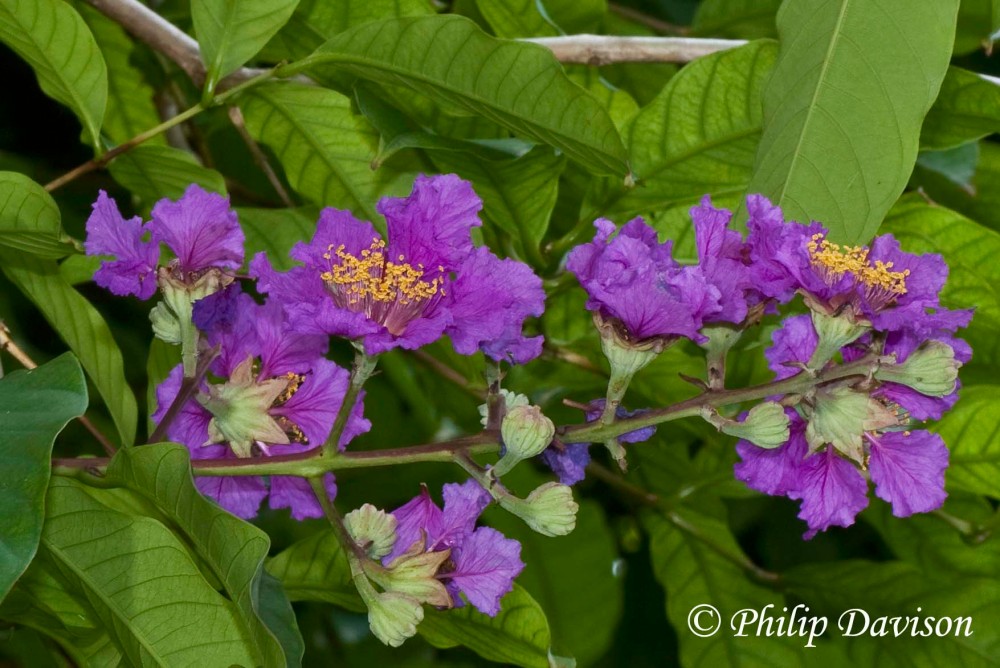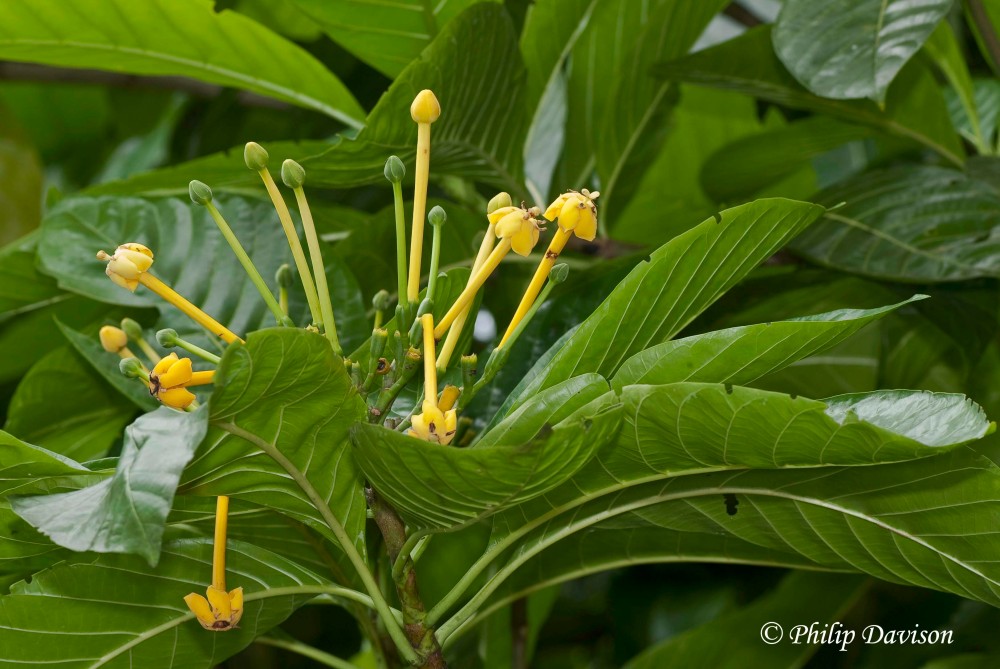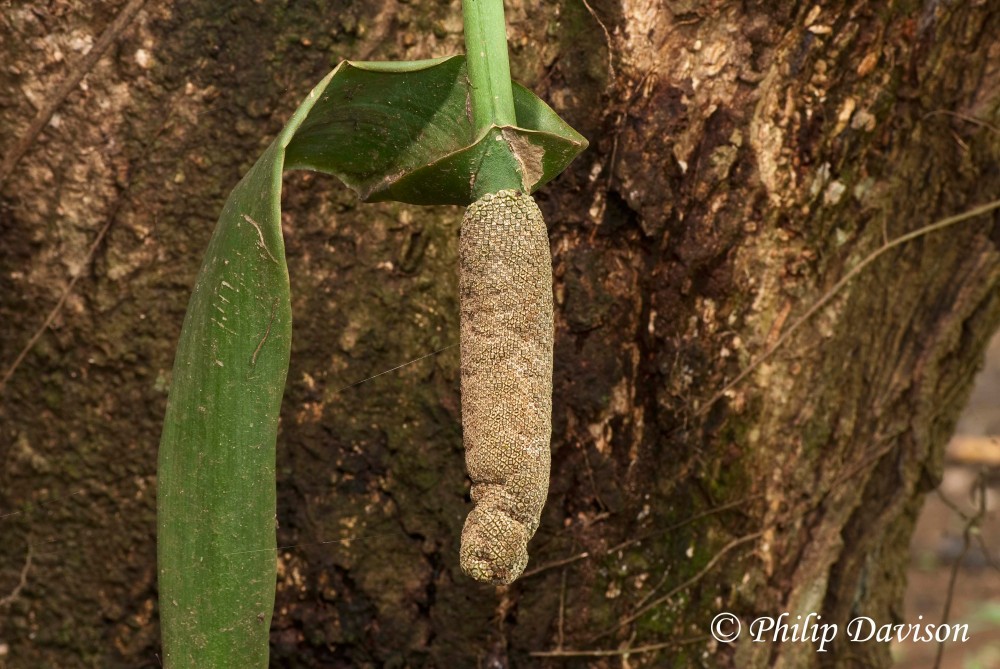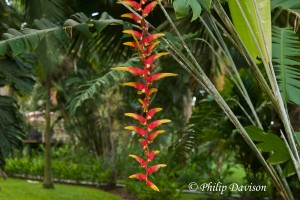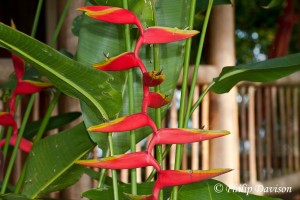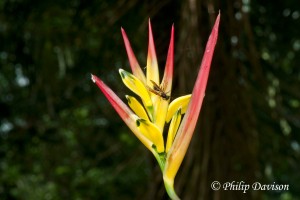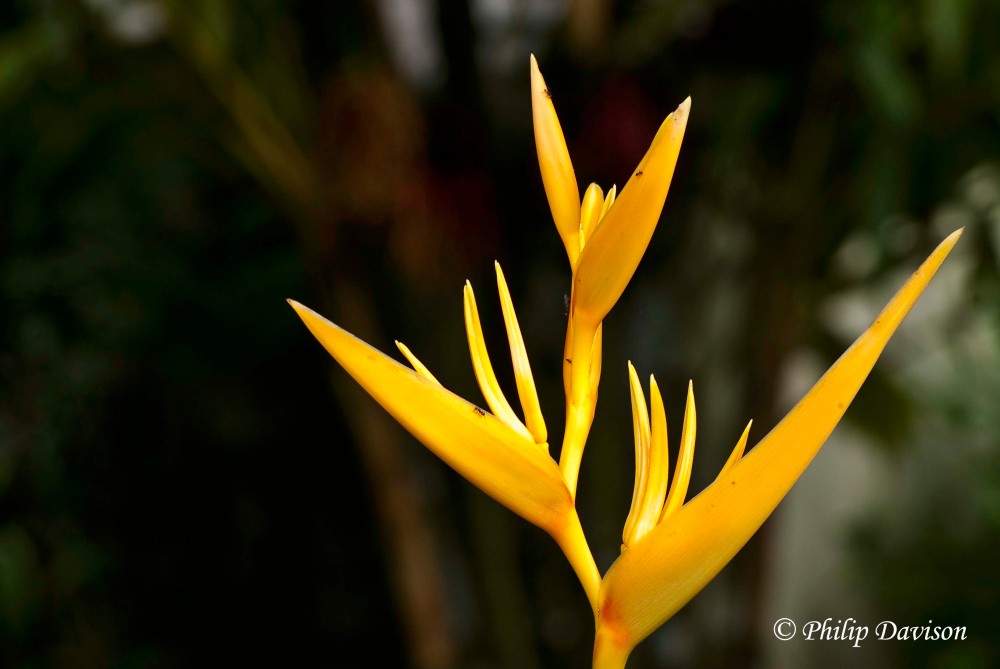Felipe del Bosque Blog June 11th 2012
Suck It Up
The rains that did start in April and continued into May did not persist into the early part of June. A daily walk on the Zapatero trail witnessed the rapid drying of the creek into little more than a series of puddles. There has been a lot of very dark cloud cover which produced a sprinkling of rain before dispersing despite the constant rumble of thunder that threatened something much more dramatic.
All the usual mammal players have been seen over the past week, monkeys, coatis, agoutis and squirrels. Macaws, toucans and curassows have been the vanguard of bird sightings. The ever present anolis lizards, whiptails, basilisks and iguanas are the commonly spotted reptiles around the grounds. Snakes are a lesser presence but are still there if you care to look. This week there have been Bird-eating Snakes, Tiger Rat Snakes, Cat-eyed Snakes and a Parrot Snake caught in the act of consuming a frog.
It had been some time since I had walked around the grounds looking at the plant life so I decided to spend some days just noting and photographing what was flowering and fruiting. Many of the plants in the Bosque gardens are tropical ornamentals. Many of them flower all year round while others only bloom once a year.
One of the small trees in front of the restaurant that immediately caught my eye due to its dazzling display of bright purple blooms with yellow stamens in the center was the Queen’s Crape Myrtle, (Lagerstroemia speciosa). This is a tree native to India, China and Australia. There are several more smaller sized individuals of these trees growing in the Tropical Garden.
To the left of the restaurant at the forest edge there is a shrub which has clusters of tiny red berries at regular intervals along the branches at the base of the leaf stalk. This is plant native to Costa Rica curiously called “Huesito” or “Little Bone”, (Lacistema aggregatum). Unless you were looking for it you could easily miss it. But the White-faced Monkeys won’t as they, along with many birds, relish the white fleshy aril that coats the dark seeds.
In front of Casa Blanca is a small tree with a big fruit, Calabacito de Montaña, (Tocoyena pittieri). The leaves are very large and broad. The flowers are yellow, long and tubular, like a small straw with a distinctive hard waxy feel to them, with 5 acutely back folded petals. The fruit is larger than a mango and when cut open resembles a large pomegranate filled with dark seeds covered in a yellowy flesh. This soon ripens into a dark unpleasant smelling pulp. The White-faced and Spider monkeys find them agreeable eating though.
On the sides of one of the mango trees there is a large leafed member of the Philodendron family currently flowering. The flower is borne on the end of a long stalk and is distinctly different from other flowering plants. The actual flower is called the spadix and normally has a covering bract called a spathe. The spadix is divided into two areas, the proximal part which is the female flower and the distal part which is the male flower. The spathe and spadix can sometimes be very decorative in form which, along with their large showy leaves and tolerance of shady conditions, makes them very attractive houseplants.
Sweet Lies
Around the grounds there are many species and varieties of heliconias flowering. heliconias are for the most part native to the Americas except for a few species found in Melanesia and Polynesia. There are in the region of 200 species of heliconia, 43 species of which are found in Costa Rica and 16 of them are on the Osa Peninsula.
Heliconias have large broad leaves fleshy leaves. Each different species of heliconia has a different shape flower, some are longer and thinner, some are shorter and fatter, yet others have turned upside down and flower from the underneath. Whatever the shape of the flower, the Heliconias are all shades of red, orange or yellow.
These are the colors that serve to attract the attention of hummingbirds, so the heliconias are hummingbird pollinated. Because each different species of heliconia has a different shaped flower, as the hummingbirds visit them, they get pollen deposited on different parts of the body. Theoretically, one species are hummingbird could therefore potentially pollinate lots of different species of heliconia. In reality though, different species of hummingbird are attracted to different species of heliconia.
The Long-billed Hermit and Stripe-throated Hermit that are frequently seen in the Bosque gardens, have long sickle shaped bills that fit down into the long narrow tubular flowers of heliconias that occur in small groups and produce copious amounts of nectar. The hermits are trap liners; they visit a regular series of heliconias during the course of the day.
Rufus-tailed Hummingbirds, Purple-crowned Fairies and Violet-crowned Woodnymphs are shorted, straighter billed hummingbirds. Their preference is for heliconias that have shorter, straighter flowers, occur in larger numbers and grow close together. Hummingbirds visit the heliconias to get a feed of nectar which is very energy expensive for the plant to produce. So, the plant cheats the bird, it only puts nectar in one of the flowers. The hummingbird doesn’t know which flower it is in, it is a boom or bust situation with an intermittent reward. As hummingbirds require about 6 times their own body weight every day just to keep themselves flying they are very pugnacious little birds, especially the smallest, the Rufus-tailed Hummingbird who will chase any other hummingbird, large or small out of its feeding patch.
Hummingbirds are not the only visitor interested in the nectar supply that the plant produces, bees too require the sweet elixir. As the bees do not have a tongue long enough to reach inside the flower, they steal the nectar by biting in at the base of the flower. To avoid this, the heliconias produce their nectar first thing in the morning, which is when the hummingbirds are active, not when the bees are active. Also, the bases of the flowers are enclosed within a tough fibrous bract which fills with water drowning the flower base and stopping the bees getting in. The water held within the bract not only keeps bees out but it turns acidic and becomes a little pond of microscopic life that lives within.
Philip is a biologist, writer and photographer as well as the onsite naturalist guide at Bosque del Cabo Rainforest lodge on the Osa Peninsula, Costa Rica.
Photo Feature
A Lingering Stench
Although not a plant, one of the first things that I noticed as I was out on my flower and fruit hunt was a small group of fruiting bodies from a very distinctive fungus, the Bridal Veil Stinkhorn. Throughout the wet season the main body of the fungus, which lives under the ground as network of thread-like structures called a mycelia, will produce the spore producing mechanism which are familiar to us as mushrooms and toadstools.
The mushroom of the Bridal Veil Stinkhorn is unmistakable. Overnight it will have appeared as a small white egg buried in the lawn and over the next period of days, if the conditions are right, the egg splits and during the hours of darkness, a long white shaft with an expanded tip covered in a glutinous grey jelly will grow up from the soil. Hanging from the tip will be a white net, narrow at the top and wider at the bottom which gives it the name ‘bridal veil”. Stinkhorn is derived from the appearance of the shaft, (they belong to the family Phalloides), the grey jelly contains the spores and smells not unlike rotten meat, a tasty treat for flies to lay their eggs in. But the flies are being duped. They land only to find there is nothing of substance to be found and fly off only now with their legs covered in slime and therefore unwittingly act as transfer vectors allowing the devious fungus to disperse its spores.
Text and Photographs are taken from the forthcoming book:
The Natural History of Bosque del Cabo by Philip Davison
Temperature and Rainfall
Average Daily Rainfall 0.20 ins. Total Weekly Rainfall 1.39 ins
Average Daily Rainfall 5.0 mm. Total Weekly Rainfall 35.3 mm
Highest Daily Temp 89°F. Lowest Daily Temp 76°F.
Highest Daily Temp 31.3°C. Lowest Daily Temp 24.5°C.
Species List for the Week
Mammals
- Howler Monkey
- Spider Monkey
- White-faced Monkeys
- Kinkajou
- White-nosed Coati
- Agouti
- Red-tailed Squirrel
Birds
- Red-lored Amazons
- Scarlet Macaws
- Great Curassow
- Black Hawk
- Laughing Falcon
- White Hawk
- Lineated Woodpecker
- Pale-billed Woodpecker
- Chestnut-backed Antbird
- Black-hooded Antshrike
- Short-billed Pigeon
- White-tipped Dove
- Long-billed Hermit
- Blue-crowned Manakin
- Red-capped Manakin
- Chestnut-mandibled Toucan
- Streak-headed Woodcreeper
- Tawney-winged Woodcreeper
- Cherrie’s Tanager
- Grey-headed Tanager
- Red-legged Honeycreeper
- Great Kiskadee
- Clay-colored Thrush
- Great Tinamou
- House Wren
- Black-throated Trogon
- Masked Tityra
- Black Vulture
- Turkey Vulture
Reptiles
- Barred Ameiva
- Basilisk
- Central American Whiptail
- Clawless Gecko
- Five-lined Ameiva
- Golfo Dulce Anolis
- Northern Cat-eyed Snake
- Norops limifrons
- Parrot Snake
Amphibians
- Banana Frog
- Black and Green Poison Arrow Frog
- Gladiator Frog
- Golfo Dulce Poison Arrow Frog
- Marine Toad
- Red-eyed Green Tree Frog
- Smokey Jungle Frog
Butterflies
- Anartia Fatima
- Archaeoprepona demophon
- Astraptes fulgerator
- Battus polydamus
- Catonephele numilia
- Chlosyne theona
- Dryas iulia
- Glutophrissa Drusilla
- Heliconius erato
- Heliconius ismenius
- Heliconius sapho
- Heraclides cresphontes
- Hermeuptychia hermes
- Marpesia berania
- Marpesia chiron
- Morpho Menelaus
- Pareuptychia occirhoe
- Philaethria dido
- Phoebis sennae
- Pyrgus oileus
- Pyrrhogyra crameri
- Urbanus simplicius
- Urbanus tanna
- Urbanus teleus
Plants
- Alamandra cathartica Flowering
- Alpinia purpurata Flowering
- Anthurium salvinii Flowering
- Apeiba tibourbou Flowering and Fruiting
- Arachis pintoi Flowering
- Aristolochia Fruiting
- Arundina graminifolia Flowering
- Astrocaryum standelyarum Fruiting
- Atrocarpus heterophyllus Fruiting
- Averrhoa carambola Fruiting
- Brownea macrophylla Flowering
- Cascabella thevetia Flowering
- Chamaedorea costaricana Fruiting
- Cocos nucifera Fruiting
- Crestentia alata flowering and Fruiting
- Clusia rosea Fruiting
- Clusia valerii Fruiting
- Costus speciosus Flowering
- Couroupita guianensis Flowering and Fruiting
- Dipsis lutescens Fruiting
- Eichhornia crassipes Flowering
- Ficus insipida Fruiting
- Garcinia madruno Fruiting
- Genipa Americana Flowering
- Guatteria amplifolia Fruiting
- Gustavia brachycarpa Flowering
- Hedychium coronarium Flowering
- Heliconia chartacea Flowering
- Heliconia latispatha Flowering
- Heliconia pogonantha Flowering
- Heliconia psittacorum Flowering
- Heliconia rostrata Flowering
- Hibiscus rosa-sinensis Flowering
- Hymenaea coubaril Fruiting
- Ipomoea Flowering
- Ixora coccinea Flowering
- Lacistema aggregatum Fruiting
- Lacmellea panamensis Fruiting
- Lantana camara Flowering
- Lagerstroemia speciosa Flowering
- Mangifera indica Fruiting
- Miconia argentia Flowering
- Morinda citrifolia Fruiting
- Musa acuminate Fruiting
- Naucleopsis ulei Fruiting
- Pandanus tectonus Fruiting
- Piper auritum Flowering and Fruiting
- Piper umbellatum Flowering and Fruiting
- Psidium guajava Fruiting
- Spathiphylum freidrichsthalii Flowering
- Stachytapheta frantzii Flowering
- Symphonia globulifera Fruiting
- Terminalia catappa Flowering
- Tocoyena pittieri Flowering and Fruiting
- Virola koschnyi Fruiting
- Vochysia ferruginea Flowering and Fruiting

